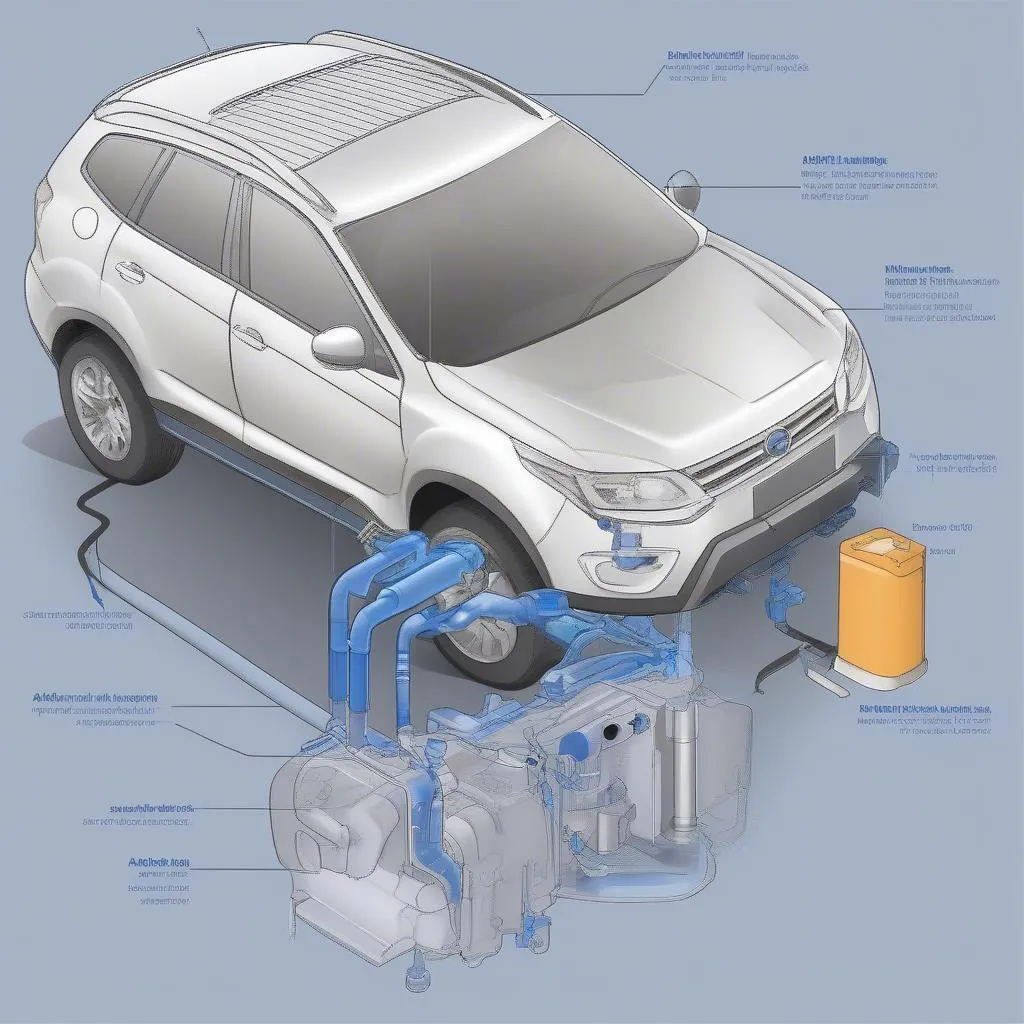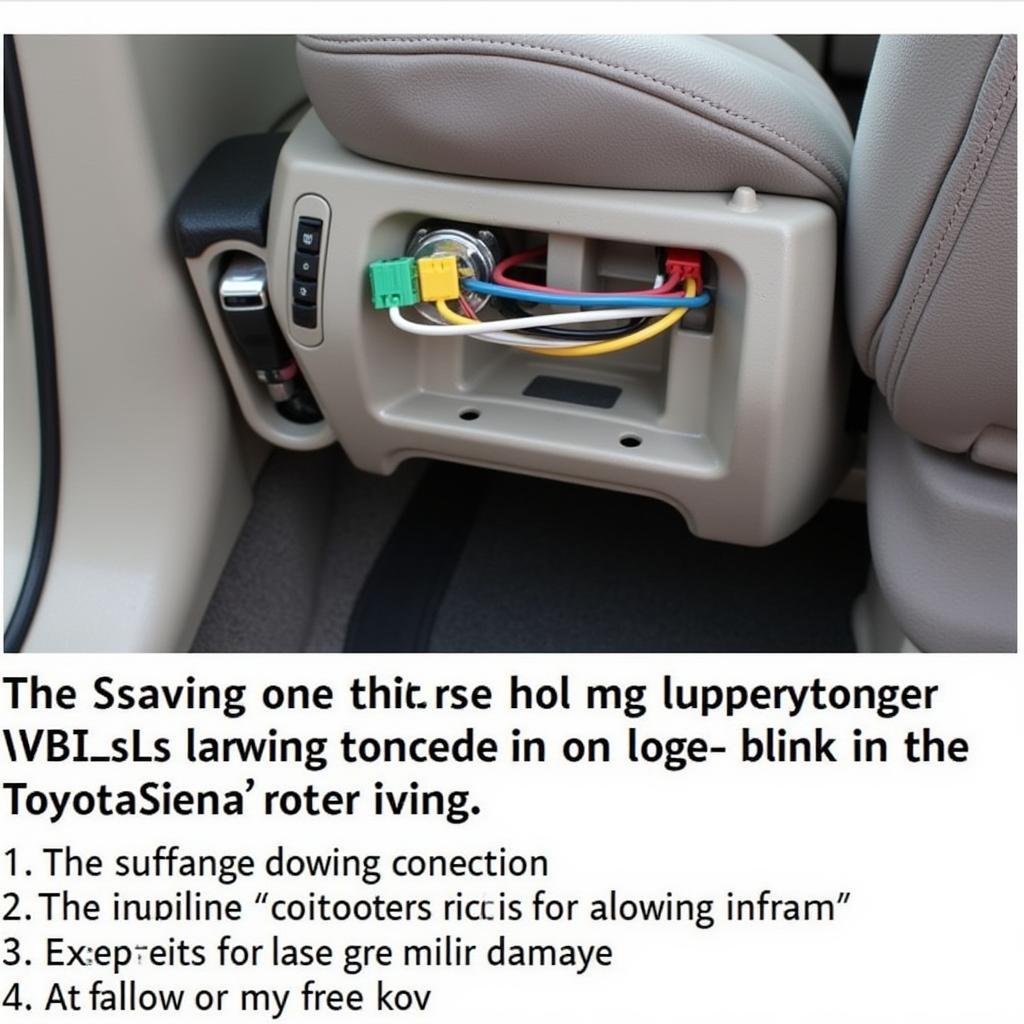The “Check Back Seat” warning on your 2017 Tahoe is a safety feature designed to prevent children and pets from being accidentally left in the vehicle. While this feature can be lifesaving, it can also be triggered unnecessarily, causing frustration for drivers. This comprehensive guide will delve into the common causes of a “2017 Tahoe check back seat warning” and provide you with practical steps to troubleshoot and potentially resolve the issue.
Understanding the “Check Back Seat” Warning System
Before diving into troubleshooting, it’s crucial to understand how the system works. The 2017 Tahoe utilizes sensors, typically weight sensors, in the rear seats to detect the presence of occupants. When you switch off the ignition and open the driver’s door, the system analyzes data from these sensors. If it detects weight that could indicate a child or pet, the warning message “Check Back Seat” will appear on your dashboard, accompanied by audible chimes.
Common Causes of a False “Check Back Seat” Warning
While the system aims to enhance safety, several factors can trigger a false warning:
- Light Objects: Even lightweight objects like grocery bags, purses, or backpacks can trigger the sensors, especially if placed directly on the seat.
- Sensor Sensitivity: The sensors in the Tahoe are highly sensitive and might misinterpret slight pressure or weight shifts as an occupant.
- Software Glitches: Like any electronic system, the Tahoe’s warning system can experience occasional software glitches that cause false alarms.
- Extreme Temperatures: Extreme heat or cold can sometimes affect the sensitivity and accuracy of the sensors.
Troubleshooting the “Check Back Seat” Warning
If you’re confident that there’s no child or pet in the back seat when you see the warning, follow these troubleshooting steps:
- Inspect the Rear Seats: Thoroughly check the back seats, including the floor area, for any objects that might be triggering the sensors. Remove any unnecessary items.
- Rearrange Objects: If you need to leave items in the back seat, try rearranging them to distribute the weight more evenly or place them in areas less likely to trigger the sensors.
- Restart the Vehicle: Sometimes, a simple system reset can resolve the issue. Turn off the ignition, wait a few moments, and then restart the Tahoe.
- Check for Software Updates: Outdated software can contribute to glitches. Check your Tahoe’s infotainment system or consult your dealership to see if any software updates are available for the vehicle’s safety systems.
When to Seek Professional Help
If the warning persists even after trying these troubleshooting steps, it’s advisable to consult a qualified mechanic or your Chevrolet dealership. They have the diagnostic tools and expertise to identify and address any underlying issues with the sensor system or software.
Advanced Troubleshooting and Solutions
In some cases, the problem might require more advanced troubleshooting or even part replacement:
- Sensor Calibration: A qualified technician can use diagnostic equipment to calibrate the sensors, ensuring they are operating within the correct sensitivity range.
- Sensor Replacement: If a sensor is faulty or damaged, it might need replacement. A mechanic can diagnose a faulty sensor and perform the necessary replacement.
“It’s important to remember that safety systems in modern vehicles are complex,” says John Smith, Senior Automotive Technician at ABC Auto Repair. “While basic troubleshooting can sometimes resolve minor issues, it’s crucial to consult a professional for any persistent or recurring problems.”
Preventing Future False Warnings
While you can’t eliminate all possibilities of a false warning, these tips can help minimize their occurrence:
- Develop a Routine: Establish a consistent routine of checking the back seat every time you exit the vehicle, even if you’re sure it’s empty.
- Utilize Reminders: Place a visual reminder, like a brightly colored sticky note, on your dashboard or steering wheel to prompt you to check the back seat.
Conclusion
The “Check Back Seat” warning in your 2017 Tahoe is a crucial safety feature. While false alarms can be frustrating, understanding the system, following troubleshooting steps, and consulting professionals when necessary can help ensure it functions as intended and provides peace of mind. Remember, a few seconds checking the back seat every time can make a world of difference.



